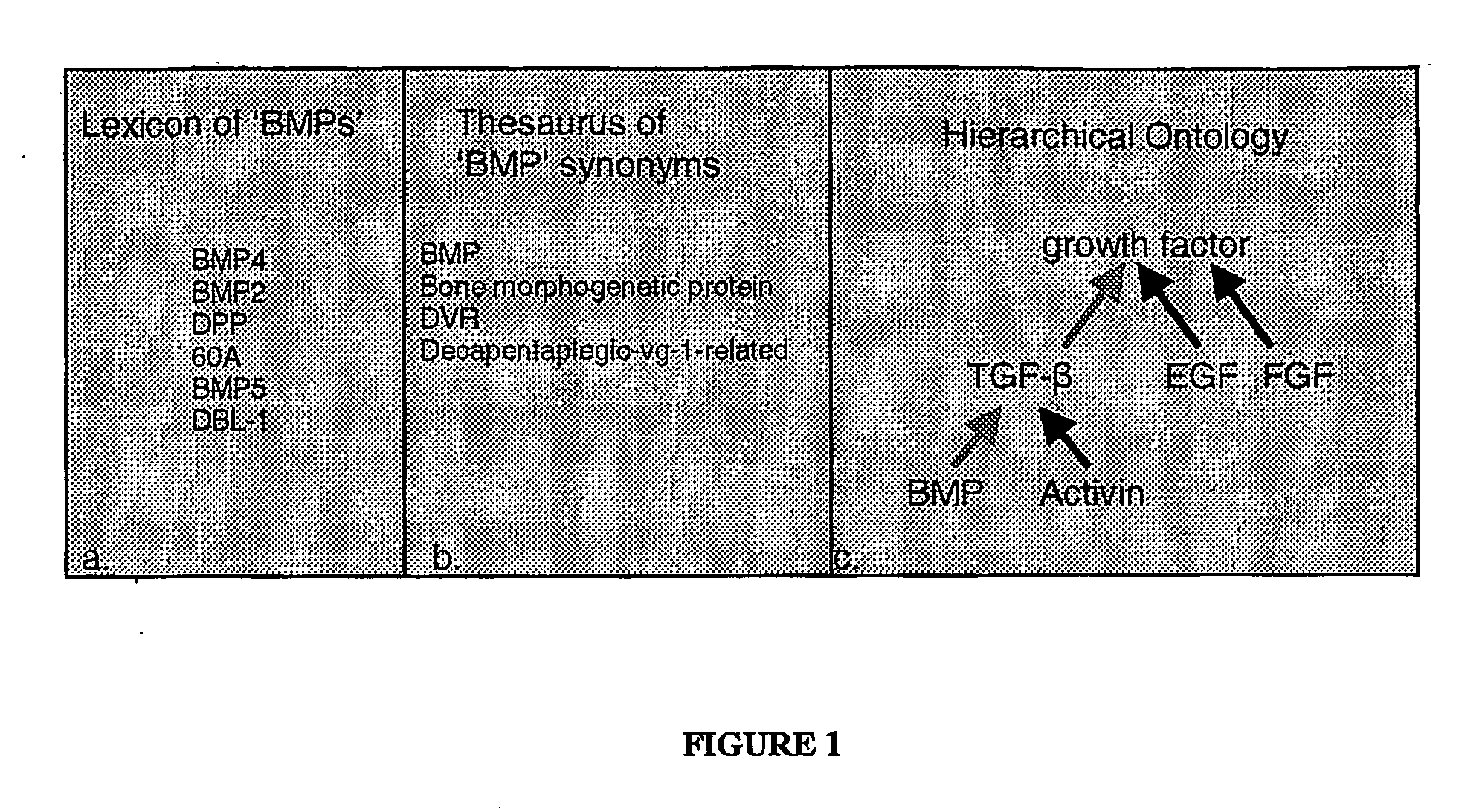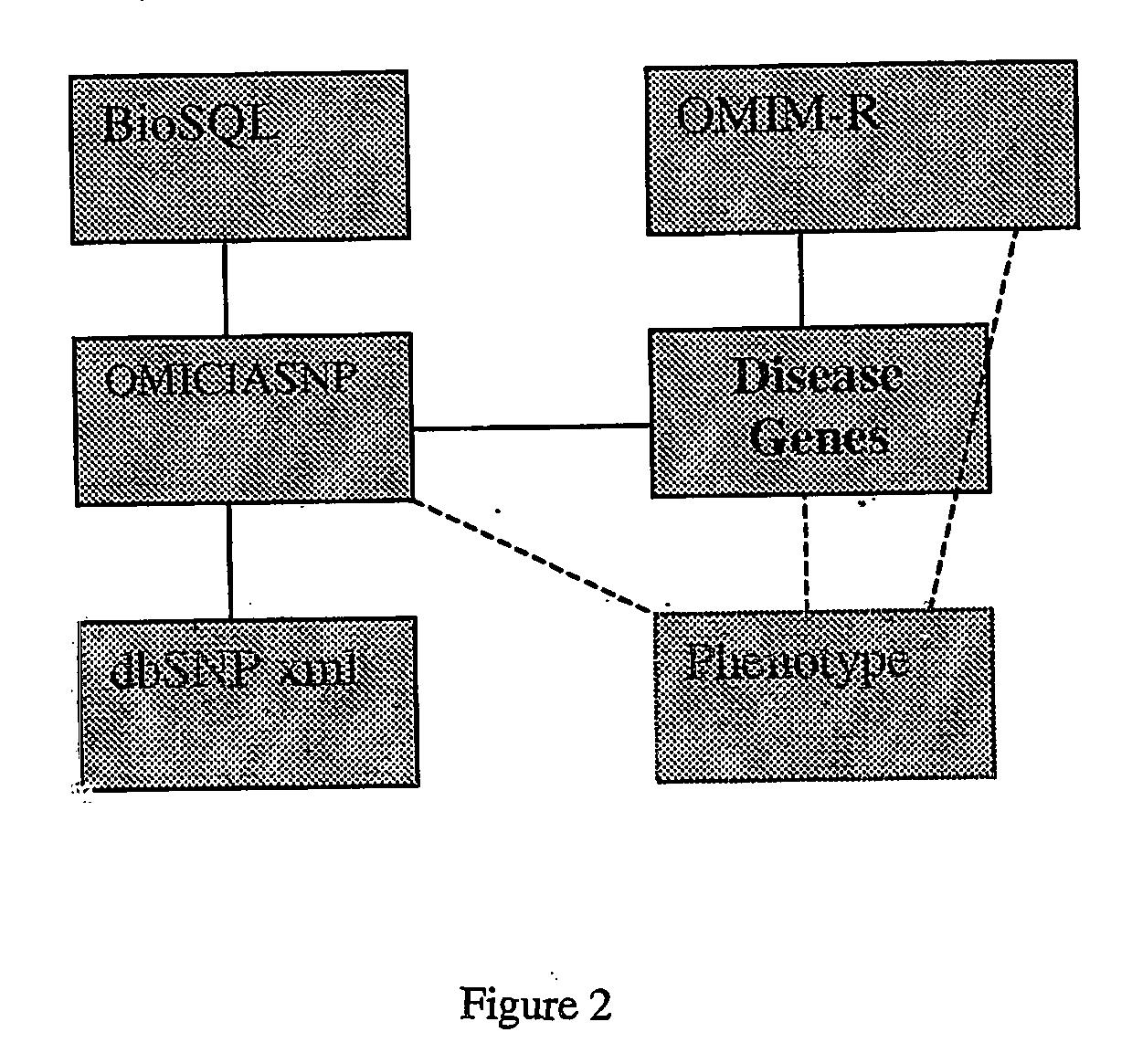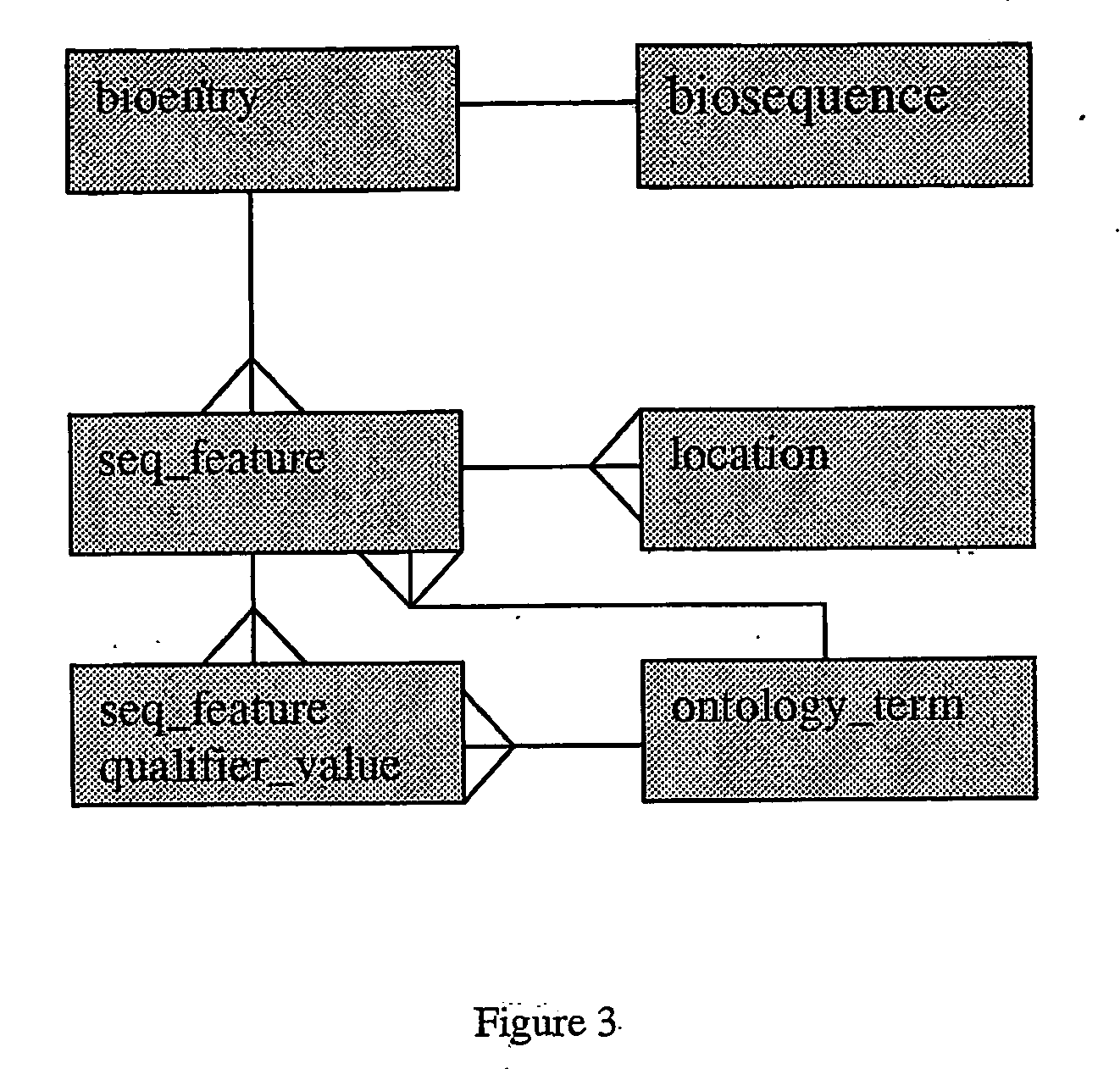Methods of selection, reporting and analysis of genetic markers using borad-based genetic profiling applications
a technology of genetic profiling and borad, applied in the field of genetic profiling methods, can solve the problems of ineffective health management practices that encompass a broad set of phenotypes, inability to accurately predict the effect of genetic profiling, so as to achieve economic and effective genetic profiling
- Summary
- Abstract
- Description
- Claims
- Application Information
AI Technical Summary
Benefits of technology
Problems solved by technology
Method used
Image
Examples
example 1
Use of a Genetic Marker as an Index to Literature
[0094] A genetic marker, and a variant found at that marker, can be characterized by a number of factors. These can include a unique sequence surrounding it, a fixed offset from a known reference sequence point, or a specific amino acid change in a particular protein. The clinical literature refers to markers, mutations, or polymorphisms in a variety of different ways. In accordance with the present invention, individual markers and variants can be characterized using these and other attributes in order to use them to index clinical literature. This index can be constructed of a single marker, or of a set of markers. By indexing literature in this way, a consolidated report can be constructed based upon these markers. If for example, there exists a genotyped, or sequenced database of markers that have been found to be present in an individual, this marker database can be used to create an extract of clinical literature that is partic...
example 2
Association Representation
[0095] As genetic disease associations become more complex, interpreting the implications of these associations becomes more complicated. The overall quality of the association, in a number of dimensions, becomes increasingly important. In addition, in order to understand the importance of a particular association to an individual, an association, in all of its texture, needs to be viewed in the overall context of the individual's genetic profile. Characterizing and representing this quality, both independent of the individual and in the context of the individual's genetic profile become fundamental to the appropriate usage of the information.
[0096] The factors that shape the implications of a genetic association are diverse. They range from the causal linkage seen with the association (e.g., the percentage of disease cases that are associated with a particular association and the percentage of individuals with a given marker who develop the disease), to ...
example 3
Characterizing Patterns of Associations Found in an Individual's Genetic Profile
[0101] Genetic profiles, defined as a set of markers found in an individual's genome ranging from a small set of markers to the entire genetic sequence, are used to generate or predict attributes of individuals that can be used for a variety of applications. These applications can range from identity verification to determining disease predisposition and drug interactions to feature prediction (e.g., height, hair color or eye color). In addition, the attributes can range from being absolutely correlated to the genetic profile, to being shaped by the genetic profile, to being unpredictable from the genetic profile. Understanding and characterizing the degree to which a genetic profile specifies an attribute has great utility. For example, the generation of a profile from DNA of a suspected criminal is much more useful when the degree to which the feature can be predicted is well-understood. If red hair i...
PUM
| Property | Measurement | Unit |
|---|---|---|
| Fraction | aaaaa | aaaaa |
| Distribution | aaaaa | aaaaa |
Abstract
Description
Claims
Application Information
 Login to View More
Login to View More - R&D
- Intellectual Property
- Life Sciences
- Materials
- Tech Scout
- Unparalleled Data Quality
- Higher Quality Content
- 60% Fewer Hallucinations
Browse by: Latest US Patents, China's latest patents, Technical Efficacy Thesaurus, Application Domain, Technology Topic, Popular Technical Reports.
© 2025 PatSnap. All rights reserved.Legal|Privacy policy|Modern Slavery Act Transparency Statement|Sitemap|About US| Contact US: help@patsnap.com



